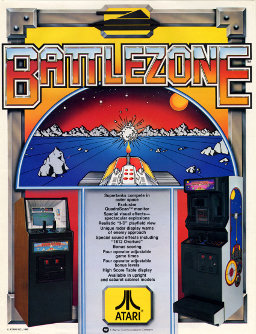
Battlezone is a first-person shooter tank combat game released for arcades in November 1980 by Atari, Inc. The player controls a tank which is attacked by other tanks and missiles. Using a small radar scanner along with the terrain window, the player can locate enemies and obstacles around them in the barren landscape. Its innovative use of 3D graphics made it a huge hit, with approximately 15,000 cabinets sold.

Battlezone is a first-person shooter real-time strategy video game, developed and published by Activision. It was released for Microsoft Windows in 1998. Aside from the name and presence of tanks, this game bears little resemblance to the original arcade game of the same name. Activision remade it into a hybrid of a tank simulation game, a first-person shooter and a real-time strategy game. In Battlezone the player is controlling everything on the battlefield from the first person view.

Battlezone II: Combat Commander is a hybrid tank shooter, first-person shooter and real-time strategy video game, developed by Pandemic Studios, and published by Activision in 1999-2000. It is the sequel to the 1998 game Battlezone, in which players pilot various futuristic vehicles across different planets, along with building and managing additional units and structures. The game's story focuses on a conflict during an alternative 1990s period, in which humanity explores space for resources only to encounter an alien race in the process that they become locked in combat with. Although met with great enthusiasm, the game generated negative reviews due to bugs and other complaints by players, though retrospective reviews were more positive.
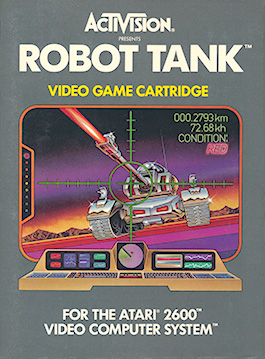
Robot Tank is a first-person shoot 'em up written by Alan Miller for the Atari 2600 and published by Activision in 1983. It is similar in design to Atari, Inc.'s Battlezone tank combat arcade video game and more so to its 2600 port. Robot Tank adds different systems which can individually be damaged—instead of the vehicle always exploding upon being shot—and weather effects.

The Helicarrier is a fictional airborne aircraft carrier appearing in American comic books published by Marvel Comics. Created by Stan Lee and Jack Kirby, the aircraft first appeared in Strange Tales #135.

Red Baron is an arcade video game developed by Atari, Inc. and released in 1981. A first-person flight simulator game, the player takes the role of a World War I ace in a biplane fighting on the side of the Allies. The game is named after the nickname of Manfred von Richthofen, German flying ace. The game uses the same monochrome vector graphics and similar hardware as Atari's own Battlezone; both were developed at the same time. Like Battlezone, the player is presented with a first-person view of the action. Both Battlezone and Red Baron use additional hardware, an "Auxiliary" board, to perform the mathematical computations required for simulating a 3D environment.
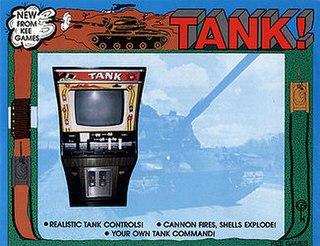
Tank is an arcade game developed by Kee Games, a subsidiary of Atari, and released in November 1974. It was one of the few original titles not based on an existing Atari property developed by Kee Games, which was founded to sell clones of Atari games to distributors as a fake competitor prior to the merger of the two companies. In the game, two players drive tanks through a maze viewed from above while attempting to shoot each other and avoid mines, represented by X marks, in a central minefield. Each player controls their tank with a pair of joysticks, moving them forwards and back to drive, reverse, and steer, and firing shells with a button to attempt to destroy the other tank. The destruction of a tank from a mine or shell earns the opposing player a point, and tanks reappear after being destroyed. The winner is the player with more points when time runs out, with each game typically one or two minutes long.
Turn-based tactics (TBT) is a video game genre of strategy video games. They are turn-based simulations of operational warfare and military tactics in generally small-scale confrontations as opposed to more strategic considerations of turn-based strategy (TBS) games. Turn-based tactical gameplay is characterized by the expectation of players to complete their tasks using only the combat forces provided to them in a generally realistic manner.
Real-time tactics (RTT) is a subgenre of tactical wargames played in real-time, simulating the considerations and circumstances of operational warfare and military tactics. It is differentiated from real-time strategy gameplay by the lack of classic resource micromanagement and base or unit building, as well as the greater importance of individual units and a focus on complex battlefield tactics.
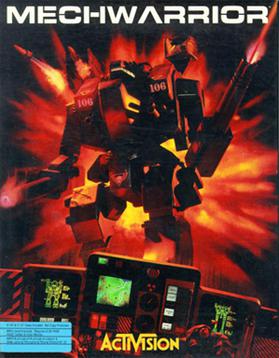
MechWarrior is the second video game released in the BattleTech game series. MechWarrior was the first video game to offer the player a chance to pilot a BattleMech from the view of a pilot. With this game the player has a great deal of freedom when compared to many of the follow-up MechWarrior games, which include choosing missions, buying & selling mechs and parts, hiring lance-mates, and traveling throughout the Inner Sphere. Underneath the major game mechanics, the player had the option of following a role playing style story arc that would unfold over five in-game years.

Fleet Command, previously labelled as Jane's Fleet Command, is a real-time tactics naval warfare simulation computer game released in May 1999. It was developed by Sonalysts Inc. and published by Electronic Arts (EA). The game licensed parts of Jane's Information Group's military information database, which was used as an in-game "Jane's Library", reference material that the player could refer to while in-game. Jane's also licensed to EA the "Jane's" name and the "Jane's Combat Simulations" logo, and the game was marketed under the "Jane's" name, much like the previous "Jane's Fighters Anthology", also published by Electronic Arts.
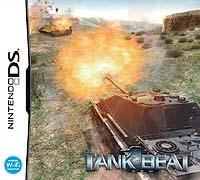
Tank Beat (タンクビート), known in PAL regions as Tank Battles, is an artillery/strategy game for the Nintendo DS that was developed by Milestone Inc.
Lego Mars Mission was a Lego subtheme to Lego Space that sold from 2007 to 2009. It is set on Mars and features astronauts, aliens, and high-tech machinery.
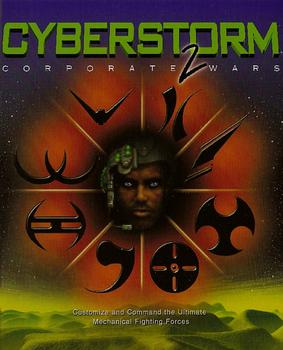
CyberStorm 2: Corporate Wars is a turn-based and real-time strategy game developed by Dynamix and released in 1998 as a sequel to MissionForce: CyberStorm. It was published by Sierra On-Line.

AV-8B Harrier Assault is a combat flight simulator/realtime strategy game developed by Simis and first published by Domark in 1992. An updated version using SVGA graphics was released later the same year, alternatively known as SVGA Harrier. In 1994, a modified version of the SVGA version was released for the classic Mac OS under the new name Flying Nightmares, which was later ported to 3D0.

Shadowfire is a video game for the ZX Spectrum and Commodore 64 and later the Amstrad CPC. It was developed by British developer Denton Designs and published by Beyond Software in 1985. The player must direct the Enigma Force to rescue Ambassador Kryxix from the traitor Zoff's flagship before the timer runs out and secret plans for a new type of starship are discovered. Shadowfire was one of the first games to use a menu-and-icon-driven interface. It was well received by reviewers of the time, and followed by a sequel, Enigma Force.

Combat Mission is the name of a series of computer wargames simulating tactical battles. The series has progressed through two distinct game engines. The original game engine, referred to as 'CMx1' by the developer, Battlefront.com, powered a trio of games set in the Second World War. Combat Mission: Shock Force was released in July 2007 as the debut of the 'CMx2' game engine. The Combat Mission games are a mixture of turn-based gameplay and simultaneous real-time execution. The game environment is fully three-dimensional, with a "Wego" style of play wherein each player enters their orders into the computer simultaneously during pauses in the action, and then are powerless to intervene during the action phase. More familiar turn-based games use an "I-go/You-go" system of play.

Super Battletank 2 is a 1994 tank simulation video game that was released exclusively for the Super Nintendo Entertainment System.
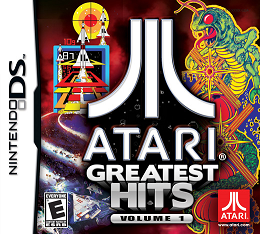
The Atari Greatest Hits series is composed of two compilations of retro Atari arcade games & Atari 2600 games ported to the Nintendo DS. While listed on the Atari web site as free for iOS & Android, Atari Greatest Hits has been removed from both app stores.
















